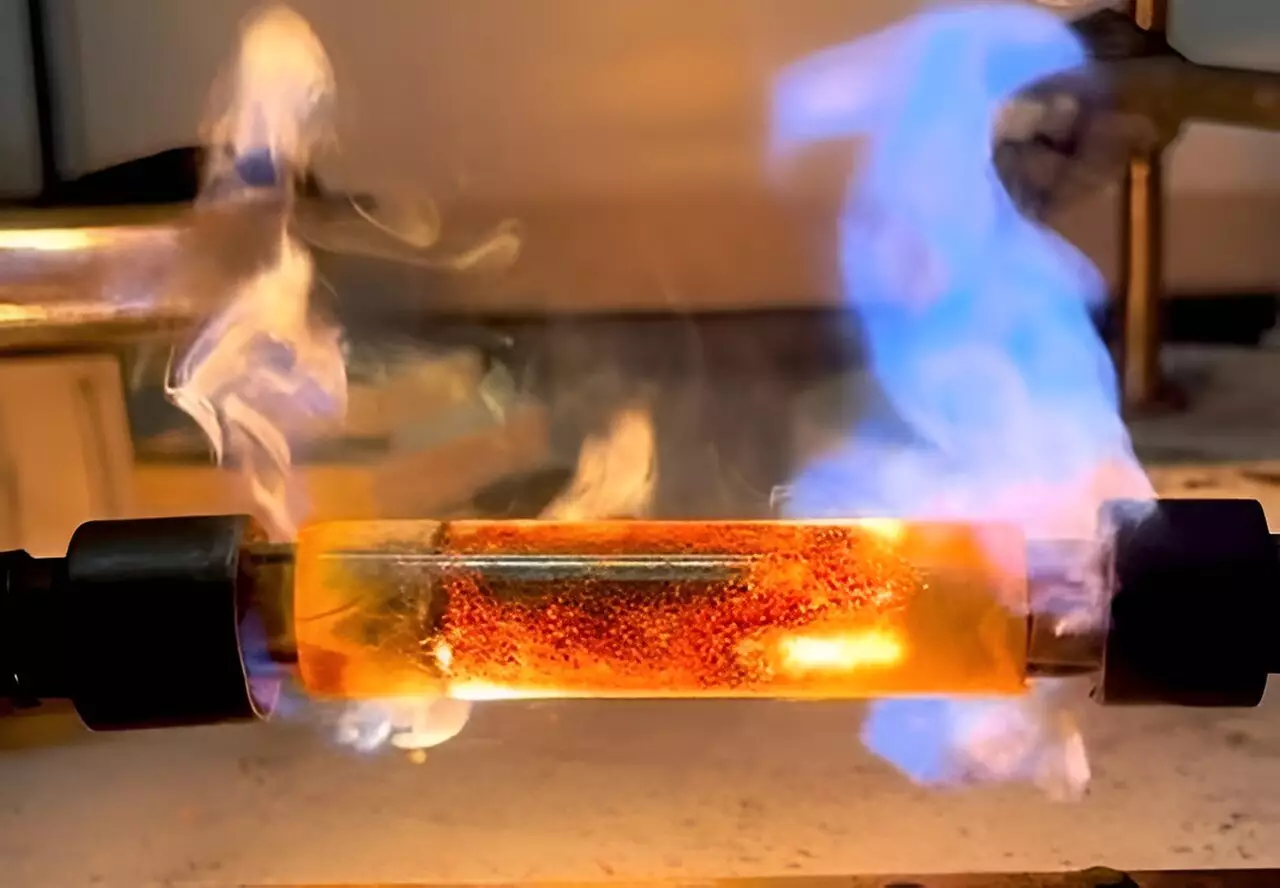The traditional methods of synthesizing solid-state materials have long been plagued by issues such as time consumption, energy inefficiency, and the generation of harmful byproducts. These processes have greatly contributed to environmental degradation and have limited the scalability of material production. However, James Tour’s lab at Rice University has developed a groundbreaking method known as flash-within-flash Joule heating (FWF) that aims to address these challenges and revolutionize the manufacturing of high-quality solid-state materials.
FWF is a technique that enables gram-scale production of diverse compounds in a matter of seconds, significantly reducing energy consumption, water usage, and greenhouse gas emissions. This method builds upon Tour’s previous research on flash Joule heating, which involves passing a current through a resistive material to quickly heat it to extremely high temperatures. What sets FWF apart is its ability to synthesize a wide range of materials beyond carbon, overcoming the conductivity limitations of traditional flash heating methods.
The FWF method involves using an outer flash heating vessel filled with metallurgical coke and an inner reactor containing the target reagents. By generating intense heat of about 2,000 degrees Celsius, FWF rapidly converts the reagents into high-quality materials through heat conduction. This innovative approach has allowed for the synthesis of over 20 unique, phase-selective materials with high purity and consistency, marking a significant advancement in material synthesis techniques.
One of the key advantages of FWF is its versatility and scalability, making it suitable for producing next-generation semiconductor materials that are difficult to synthesize using conventional methods. Materials like molybdenum diselenide and tungsten diselenide can be efficiently synthesized using FWF, opening up new possibilities in electronics, catalysis, energy production, and fundamental research. Moreover, FWF has the potential to revolutionize industries such as aerospace, where materials like MoSe2 demonstrate superior performance as solid-state lubricants.
Not only does FWF offer a more sustainable solution for material synthesis, but it also reduces the formation of impurities and byproducts, making it a greener alternative to traditional methods. The potential of FWF to transform various industries and pave the way for new applications in material science is significant. As Yimo Han, assistant professor of chemistry, materials science, and nanoengineering, aptly states, “FWF represents a transformative shift in material synthesis.”
The development of the FWF method by James Tour’s lab represents a major breakthrough in the field of material synthesis. By enabling faster, cleaner, and more sustainable manufacturing processes, FWF has the potential to redefine the way solid-state materials are produced and utilized in various industries. This innovation not only offers a solution to the environmental challenges posed by traditional methods but also opens up new possibilities for advancing material science and technology.


Leave a Reply